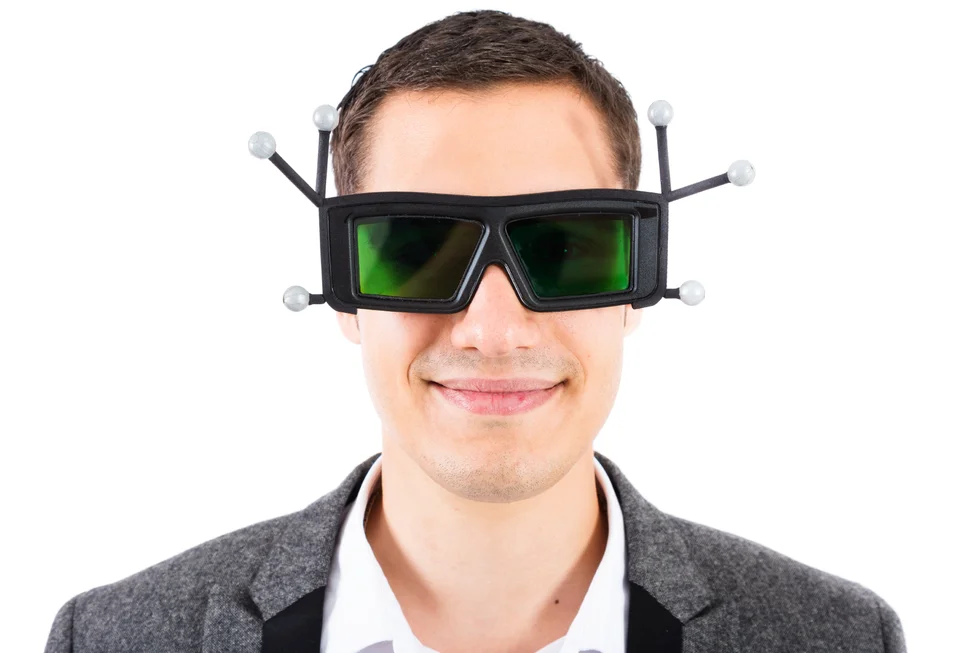Gaming (VR)

iStock

Storytellers have transported audiences to alternate dimensions for thousands of years, from books, movies, and, more recently, video games. But virtual reality is about to transform storytelling once again into a full visual and auditory immersion in another world. A player who, as in “Tron," steps inside the video game. A person who enters a “Matrix"-style simulated world.
For decades, the military has had access to virtual reality technology for training programs like flight simulators. It's also been used in medicine for surgery simulations and in manufacturing, where car makers and shipbuilders use virtual reality for virtual prototypes.
However, the technology, which requires very high-end graphics, motion sensors, and computer processors, has cost tens of thousands of dollars or more per unit—until now. With the mobile boom, computer processors, display screens, and motion sensors have all become better, cheaper, and smaller.
Today's high-end prototype headsets, most of which will hit the consumer market next year, are like a first-generation Star Trek holodeck. These "tethered" headsets — including the Oculus Rift, HTC Vive, and Sony Playstation VR — transport you to a virtual world at a fidelity good enough to make you feel you are really there.
But even the lower-end headsets available today, such as the Mattel View-Master VR, the Samsung Gear VR, and the hundreds of takes on the Google Cardboard, are already good enough to give a taste of virtual reality. The horror games will scare you, and the virtual roller coaster rides will make the bottom drop out of your stomach.
The Fibrum VR Roller Coaster app, for example, available for both iOS and Android, has been downloaded more than 4 million times, according to the company. The Android YouTube app already offers tens of thousands of 360-degree and virtual reality videos that can be experienced with low-end mobile headsets. Sports fans with Samsung Gear VR headsets can even watch live NBA games in virtual reality. The first live VR game was October's season opener — Golden State Warriors take on the New Orleans Pelicans.
Most experts in technology expect virtual reality to be the next major computing platform. Both consumer surveys and sales numbers seem to show huge growth in the area. Industry analysts are also predicting rapid growth. In fact, if anything, their estimates are already proving to be too low.
For example, the VR Council industry group predicts six million virtual reality headsets will be used by 2016 and 30 million in 2018. Juniper Research, a high-tech analyst group, released its own projection in mid-September — three million headsets in 2016 and 30 million by 2020.
However, in October, Google released new numbers about its Google Cardboard virtual reality application—that it had been installed 15 million times. Soon afterward, The New York Times distributed more than 1 million headsets to its subscribers, and in November, the Samsung Gear VR sold out on the first day of its release.
Consumer surveys show that demand for virtual reality remains high. In November, a poll by Greenlight VR and Touchstone Research showed that 64 percent of Baby Boomers, 70 percent of Generation X, 73 percent of Millennials, and 79 percent of teens and tweens were very excited about virtual reality. Seeing is believing—79 percent of people who tried virtual reality wanted to experience the technology again, with 81 percent saying they would recommend the devices to their friends.
Even more relevant, giving the coming holiday shopping season, 70 percent of teens and tweens said they would ask their parents for a virtual reality device.
No, virtual reality will not replace the World Wide Web, an excellent way to distribute information, text, images, and videos. Nor will it replace any previous medium. Sculpture did not eliminate painting, radio did not eliminate books and newspapers, television did not eliminate movie theaters, and recorded music did not eliminate live performances.
Virtual reality is a brand-new medium that communicates experiences rather than sound, images, stories, or data.
Climbing Mount Everest is a dangerous, difficult experience that only a few people will ever attempt. But a virtual climb may be as cold and uncomfortable as the real thing.
The Google Expeditions program has brought virtual reality field trips to over 100,000 schoolchildren. Similar to the public television show The Magic School Bus, virtual reality already takes students to the surface of Mars, the Great Barrier Reef, the Acropolis, Antarctica, and the Great Wall of China—places impossible or impractical to reach in real life.
Real estate and tourism are already being transformed, as Google Cardboard users can take virtual tours of far-away properties or homes before they are even built.
Virtual reality will accelerate the adoption of telecommuting by allowing companies to replace some of their physical offices with virtual ones. More brick-and-mortar retailers will disappear, replaced by virtual showrooms. Today's headsets aren't good enough to support this kind of multi-user interactivity, but next year's headsets will, and vendors are already working on platforms to enable both virtual offices and virtual commerce.
In medicine, virtual reality has also been making an impact. Medical students have long been using simulators to learn surgery techniques, but virtual reality has also been successfully used for pain management, for treading Post-traumatic stress disorder and phobias, for calming patients during MRIs and other stressful procedures, and even during operations.
The Internet and the mobile industry have transformed the world. Because of the groundwork already laid by these two revolutions, virtual reality will arrive even faster and change us in even more profound ways.
GearBrain Compatibility Find Engine
A pioneering recommendation platform where you can research,
discover, buy, and learn how to connect and optimize smart devices.
Join our community! Ask and answer questions about smart devices and save yours in My Gear.
